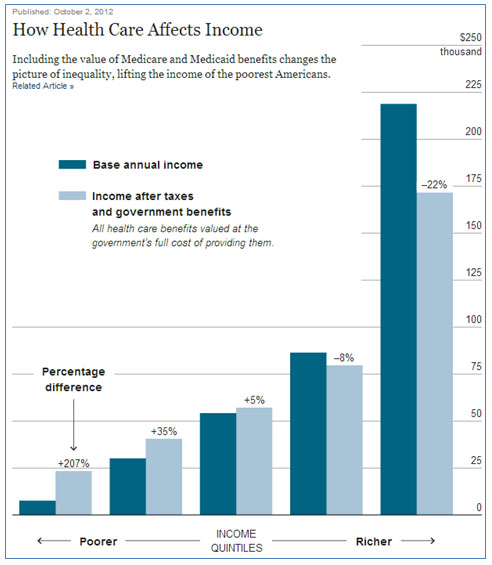
In October 2012, The New York Times published an interactive graph on their website comparing a person’s income before and after considering the person’s taxes and health care benefits. Click on the image to access the article.
Data are frequently displayed in graphs in the media to make it easier to visualize what a set of numbers actually means. Different data displays are used for different purposes.
Data are also used to describe characteristics of a particular population or a group that is being studied. It is usually difficult to survey every member of a population, so frequently a representative sample is used to describe the characteristics of a population. For example, The New York Times reported the following survey that was conducted in 2009. The researchers did not talk to every American resident over the age of 15. Instead, they selected a sample of residents in order to describe the entire population, or all American residents over the age of 15.
To see the graph as it was in the original interactive, as well as additional graphs from the same survey, click on the above image.
In this lesson, you will investigate how a random sample can be used to describe a population. You will also look at different ways that valid conclusions can be drawn from a set of data that is displayed in a visual format such as a table or a graph.